The Long Tail and My Long Rant
If you follow any tech blog you would no doubt have heard of the term “The Long Tail” before. It’s not an entirely new concept but it’s gaining more and more media coverage in recent years due to the success that first-generation “long tailers” such as Amazon and Google are enjoying.
The Long Tail is a book by Chris Anderson, editor of Wired and the person who first coined the phrase, that explores how the theory can be applied in so many different aspects of the world today, from YouTube to retail marketing.
Before we move on to my thoughts, I shall explain the concept of a Long Tail. Here’s a primitive graph I drew with the pen tool in Photoshop that shows the relationship of sales with respect to popularity of products.
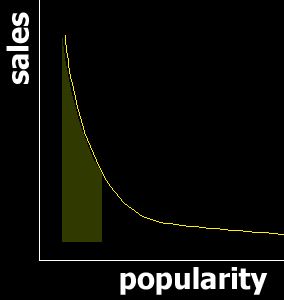
Figure 1
Popularity is sorted by rankings, with the most popular starting with “1″ on the left. As you can see from Figure 1, the most popular items sell significantly better than the less popular items. (Well, duh!)
The area shaded yellow in Figure 1 contains products that a brick-and-mortar retailer will stock. It makes sense to stock only the most popular items so as to maximize profit. CD shops can only stock a limited number of titles because they have a limited amount of display space. Cinemas can only screen the latest Hollywood hits because old and independent films do not get enough audience to pay for the limited number of screens and timeslots.
But what if an online service like RealOne’s Rhapsody can offer as many songs as they can license, all at the same time? We’ll get a graph that looks like this:
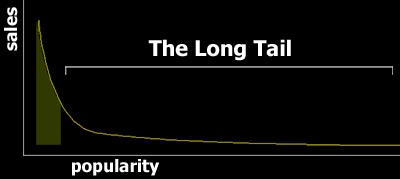
Figure 2
It’s still the same graph, just extended further. Online retailers are not restricted by the traditional retail bottlenecks. Having 100 million songs costs only slightly more than having 1 million songs in a digital library, and digital storage is only going to get cheaper.
When online retailers increase the variety of products they offer, they notice an interesting trend: the popular items still sell better, but even the least popular item sells at least a few units.
In traditional retail, an item needs to sell a predetermined amount per time period or else it will be unprofitable due to the overhead costs of maintenance and the potential revenue you are sacrificing by giving shelf space to a less popular item.
In online retail, it doesn’t matter. An item is profitable as long as it sells one or two copies. The cost of maintaining a huge catalogue online is so low that the cost of including more items in your offerings is virtually zero. You don’t have limited shelf space, you don’t need to hire more workers to maintain a bigger shop and you don’t need a bigger warehouse. Hard disks are getting cheaper by the second.
When you have such an enormous catalogue, the items at the bottom of the popularity list are really unpopular, to the point of selling one copy every year perhaps. But even then, you still make a profit off it because it costs you nothing to offer the product. For every day a CD sits unsold on your physical shelves, it lowers your overall profit margin. But a 10 megabyte song left unsold in your terabyte-size music catalogue costs you nothing to offer. In fact, when it does sell, even if it’s just one single download, you automatically make a profit off it.
The idea of the Long Tail is that instead of making millions of dollars for each item near the top of the popularity rankings, you can make one dollar each from a million items at the bottom of list, something that was not possible before the Internet due to the bottlenecks associated with physical retail.
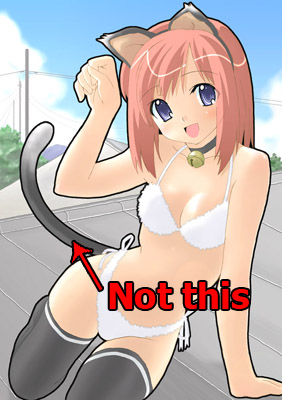
Tyranny of the Mediocre
The area that is most affected by the Long Tail revolution is the entertainment industry. In the days before the Internet and even now, Hollywood’s business formula has always been to create mass-appealing works. These are not the best movies in any sense of the word, but they appeal to the lowest common denominator. Everyone watches Hollywood movies not because they are that person’s favourite movies but because those are the only movies available.
Each Hollywood movie must sell a set number of tickets or it will be unprofitable and therefore a failure, therefore each movie was created with the Average Joe in mind. If you are a film critic seeking higher forms of artistic expressions, well too bad for you because you aren’t part of the majority and therefore insignificant in terms of overall profits. Independent films may be better in terms of artistic merits, levels of creativity or entertainment value, but they will never capture enough of the average audience to find a place in the cinemas.
Let’s face it, everyone has different tastes. A movie that I think is the best movie in the world may not be so for 90% of the world. People differ so much that it’s simply easier and more profitable for Hollywood to create one single mediocre movie that appeals equally to everyone instead of a million extraordinary movies that each appeals greatly to one or two person. When the only movies available to the average consumer are Hollywood movies, he or she will end up watching Hollywood movies, simply because there is no other choice. It is the tyranny of mediocrity.
Internet is changing all that. A video that involves in-jokes about a specific interest such as anime can get a few thousand hits on YouTube. To an anime fan, that video targeted at people who share the same interests as him can be a whole lot more meaningful than a Hollywood movie targeted at no one in particular. To him, that video might just be the best video in the world, even though it’s FAAAAR from a Hollywood movie in terms of popularity.
But there are millions of little videos just like this, targeted at millions of differing interests shared by millions of different communities. Each video, viewed by only a few to a few thousand people, is just a small part of the Long Tail, but together that Long Tail reaches a larger audience than the biggest Hollywood movies. Such a long tail cannot survive in the traditional market because distribution used to be limited by physical distances.
If there are only ten fans of Movie Y in the whole of Country X, then there’s no point for a shop to stock Movie Y DVDs because the potential customers are too few and too dispersed for the shop to make a profit off it. However on the Internet, all the tens of fans of each country are connected to one another by near-instant digital communication. An online retailer can sell 10 DVDs of Movie Y to 10 fans from each country and still make a profit off it, even if less than 0.00000001% of the world has even heard of Movie Y.
And if the movie is stored and sold digitally, then it costs next to nothing for the store to stock it. And since in such a system an independent film costs just as much to distribute as a Hollywood movie, there is no reason not to offer both. The Hollywood movie will still sell a few thousand times more copies, but there is no reason not earn a little more profit by offering an independent film too, or any movies you can get your hands on for that matter. Unlike running a cinema, selling an independent film online is not depriving you of a chance to sell ANOTHER Hollywood movie and thus earn more profit. You can afford to stock and sell them all.
And when you offer more choices, people will choose them. An estimated 40% of Amazon’s profits come from books that even the largest brick-and-mortar book stores in the world cannot afford to stock simply because they are too far into the Long Tail. Of the tens of thousands of CDs released every year, a CD store can probably afford to stock only a few hundred of the most popular titles, but ALL of them can be purchased online. And people do buy them. The untapped potential of the Long Tail that stretches to infinity is just beginning to show itself.
The Long Tail is NOT Junk
It is a common misconception for people to think that the the Long Tail consists of nothing but junk and those items are unpopular because they are bad. That is probably true for some of them, but the reality is that the Long Tail consists of both ends of the spectrum. For example, compare a 4″ portable TV, a 32″ TV and a 60″ plasma TV. Which one is going to accumulate the highest number of sales?
My bet is on the 32″ LCD. The 4″ and 60″ do not sell as well not because they are bad or useless but because they have more specific targets. Not everything in the Long Tail is bad, just niche.
Beyond Retail
The Long Tail is not just an economic theory, its social implications are also far-reaching.
So… what has this theory got to do with you, a reader of my little blog? Well the truth is that by reading this blog, you are part of a Long Tail: The Long Tail of Blogs.
There used to be a few publications read by millions of people each, now there are millions of blogs read by a few people each. My blog is one of them. The Chris Anderson calls this the “democratization” of mass media and I agree.
It doesn’t matter whether you think that those millions of blogs are worthless compared to professionally made publications. A majority of them are probably trash if you judge them by journalistic merits, that is the truth. But at the same time, those blogs hold unique meanings to their readers that a publication targeted at the masses can never hope to achieve.
A blog about anime is a lot more meaningful to me than an entertainment magazine that occasionally has one page on anime. A blog about Gundam is a lot more meaningful to a Gundam fan than an anime magazine that occasionally has some articles about Gundam. There is no such thing as a niche too small for the Internet.
Indeed, anime itself is part of the Long Tail niche and it received a huge boost from the Internet. Before the Internet, only the most mainstream of anime can hope to ever reach an audience beyond Japan. People did not watch anime simply because they were never given a chance to try it. With the Internet, people are now given to chance (albeit illegally) to watch anime that they would never have otherwise watched and more and more of them find that they like it. Anime is still a niche compared to mainstream entertainment, but now it’s a profitable one for American companies.
In Other Words…
In traditional media, things that are mainstream (popular) are given more airtime, more shelf space, more advertisements and more of everything simply because they are deemed to be more likely to succeed. And if they do eventually succeed, they become even more mainstream. Similarly, things that are niche are not given any attention by the media distributors and these things can never hope to raise out of their niche status.
With the Internet, everything is given equal opportunity to succeed and you find that surprisingly some things that were classified as niche do a lot better than expected.
A really good Hollywood movie and a really good anime movie both cost nothing to download from BitTorrent. A person who has never watched these two movies can download them both with equal ease and, after viewing them, decide on which one he/she likes better. Out of a 100 people, perhaps 20 will end up preferring the anime and watch anime over Hollywood next time. I am one of them.
In the old model of media distribution, the executives decide that the anime movie is not even worth releasing on DVD and you don’t even get to make that comparison. Out of a 100 people, 100 of them will watch Hollywood movies next time simply because they know nothing better. You as the consumer do not get to make the first decision.
And that is why Chris Anderson calls it the “democratization” of media: The consumers are taking back our right to watch what we want to watch and not what the companies THINK we want to watch.
So really, anime fans and companies in America owe a lot to online piracy for breaking down the vicious cycle found in traditional media distribution.
The Problem of Diversity
One huge problem with this trend is that people are watching and reading more and more diverse topics. Thirty years ago, you would have been watching the same TV channels, listening to the same radio stations and watching the same movies in the same cinema as everyone else in the neighbourhood simply because there was no other choice.
Today, you can instead surf the net, rent some movies through Netflix, play a MMORPG, watch a video on YouTube, listen to a podcast on an obscure topic or watch one of the hundreds of niche and diversified channels available on cable.
This means that a teenager of today’s generation has less interests in common with his or her neighbours than one from any generations in the history of mankind. Only two people in my class watch the same anime I do. No one plays the games I play (and I’m not even talking about eroge). I bet no one has read “The Long Tail” besides me. Thanks to the Internet, people can spend their time on what they are really interested in. But at the same time, we lost the common topics needed for small talks and social interactions in real-life. As popular as anime is, if you are an anime fan living in a small town of a few hundred you are likely to be alone.
That is why many have turned online and why you are reading my blog. Instead of trying to find common topics with the people around us, we can instead find people online who already have the same interests as us. Arguably, this is diluting social bonds in the modern world.
The Paradox of Diversity
But is it really a problem?
People used to organize themselves based on physical proximity. We used to associate ourselves with our town, our city and our nation. A nation of people with similar culture bonds together, often with the encouragement of shared xenophobia.
Over a century ago, an East Asian was unlikely to have much in common with an European, whether in terms of interests, life style or mindset. The physical distance between places prevented people from sharing their ideas with anyone other than their neighbours. Barring the rich, the scientists and the politicians, no one knew what was really going on in other countries and what the thinkings of people of other nations were really like. This set the stage for the two World Wars, where the national leaders fully exploited the ignorance and xenophobia of their people and their soldiers.
The diversity brought about by the Internet is actually unifying the world, as counter-intuitive as it may sound. Fifty years ago, the only things my grandparents in China knew about America was that it supported the Nationalist enemy and fought against China in the Korean War, in other words it wasn’t exactly what you call a good impression. My grandmother had not met any Americans before in real-life until late into her seventies. By diluting the traditional bonds we share with our neighbours, the Internet is at the same time allowing us to form new bonds with people on the other side of the planet, something that my grandparents could not do just fifty years ago.
I have chatted with anime fans from America, Finland, China, Japan and Australia and found that lot of them were nice people just like most people I meet in real-life. I also read about the Vietnam War, the Cultural Revolution and the Nanking Massacre. Twenty years ago, I could only have done the latter and I would have formed my opinions (extremely negative ones no doubt) about those countries based on that alone. It’s no wonder that in the last century, people hated each other so much that they fought two World Wars over it. Those people never had a chance to understand each other.
Physical bonds will always be there. No matter how advance the Internet becomes, we will always need to maintain physical relationships for a variety of reasons. But the Internet is creating a whole new world by allowing us to communicate and to understand one another despite our physical distances. Not only does it give us the means to communicate, it provides us with the countless common topics we can talk about. Thanks to our common and often niche interests, I can get to know a person on the other side of the planet so well that it would have make no difference even if he lived next door to me.
Perhaps when everyone gets on the Internet, we may someday finally have world peace.
Of course, I can foresee a few possible problems with my idealistic dream. For example, the world could end up being redivided into countries with Internet access (and thus eventually have similar culture and values) and countries without (outside the global culture sharing network). Also, the Internet world, while unrestrained by physical distance, is still currently fragmented by language barriers. It is entirely possible for geo-political influences to be redivided into a few language blocs, perhaps as few as just two: English and Mandarin, after the rest gets assimilated as Internet progresses.
But eventually, whether it takes three hundred or three thousand years, the Internet will unite mankind. You can quote me on that.
Wow. 2800 words. That was a long rant… 眠いよ _| ̄|O
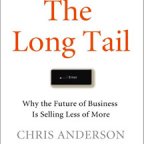
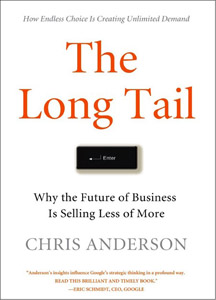






August 26th, 2006 at 2:08 am
One issue with the Internet is that by unifying the world with its ability to tolerate diversity, you end up with a global culture that shares its ideas and thoughts from the same source; we’ll end up with a lot less diversity in our ability to innovate and create since we will theoretically see things from the same perspective and mindset. Of course, since I’ve pointed this out it obviously will not happen, as is the rule with all gloomy forecasts.
August 26th, 2006 at 2:23 am
Very well put.
I haven’t had the chance to read the book yet, but it’s on my shopping list.
I do share your vision that the more people understand each other, the less they are prone to fight.
I hope I’ll be able to quote you in 3000 years ;-)
August 26th, 2006 at 2:45 am
Hurray for postmodernism?
I see why the title was relevant though. The rant after the long tail.
It is true that I no longer bother talking to real life people about anime, whereas in the past I would’ve put in a lot of effort pressuring peers to watch particular series so we could discuss. Why bother when you can just click a bit and gain access to thousands of like-minded people? This surely makes one’s passion and interest grow, though sometimes to the detriment of other aspects.
I do not think an essay like yours could’ve been written with such ease 5 years ago, when internet access, websites and personal publishing were still lacking. You would’ve had to research paper media to get your facts and figures, and after the product is complete, nobody will read it unless you take the trouble to set up a website or submit it to a magazine. So the internet rocks.
August 26th, 2006 at 2:59 am
Reading your lengthy rant about this phenomenon reminded me of a joke by some stand-up comedian whose name I can’t particularly remember now. It goes something like this:
August 26th, 2006 at 4:04 am
Sadly, I’ll have to say “nah” on “hurray for postmodernism?” Rather than dissolve labels, we’ve just gained the ability to choose labels. I guess that’s still an improvement, though. This has been horrible for politics, for example since now people can choose only to see the views of people whose views support their own.
August 26th, 2006 at 4:55 am
nice rant, got stuck in the middle, since i’m used to block texts and scroll to the end when i’m not uber interested. i’ll come back later to read the rest of it =D
one rant for ya: did you know that white is unatractive for loooong texts? makes ppl tired of the bright background >>> i’ve been reading a book about typographs
August 26th, 2006 at 5:00 am
having said that. it occurred me that i could be took the wrong way hehehe but in fact your blog is quite interesting =p
that’s all /o/
August 26th, 2006 at 9:32 am
Excellent essay… really. Got me caught really fast and I couldn’t stop until the end.
May I have permission to translate this text to Spanish and post it in my blog? Giving you credit, of course.
August 26th, 2006 at 9:36 am
With respect to politics, even with this rise of the media, however, there are governments trying to restrict information from the internet within their own countries. For example, you could try googling “Tiananmen Square” and compare the number of results with those you get from Google China. Admittedly it’s not really possible to cut the whole country off from the rest of the world, but the fact still stands that sometimes the language barrier limits the amount of information one can have access to.
August 26th, 2006 at 11:59 am
Sherman: Sure, go ahead.
Anyway, this is what I meant in my section on The Paradox of Diversity:
First of all, the Internet has allowed more niche to flourished than any culture in the history of mankind. I don’t think it’s going to kill off diversity just because everyone has access to the same things. We will still end up liking different things depending on which part of the Internet we frequent. Diverse culture still exists, just not along geographic divisions now.
And the fact that it’s not organized along geo-political lines makes a LOT a difference for the future of mankind.
You can say that al-Qaeda and other similar terrorist organizations are using the Internet to find like-minded recruits unconstrained by international borders.
But you can also look at it this way. Islamic fundamentalism is a niche that is nothing compared to the organized nationalism of the last century. In today’s world, Islamic extremism can NEVER organize and brainwash an entire country the way Japan and USA did in the 1940s.
Nothing can, because the world is slowly redividing itself into small niches in complex networks. Islamic extremism can REACH millions of people thanks to the Internet, but a majority of them belong to their own interests niches that consist of people of other religions.
Internet is also helping to unite the world in another way that I didn’t mention because it has less to do with the Long Tail. Technology has always been the differentiator of wealth. Those countries that monopolize technology have always been the richest ones. Just like Hollywood movies, success breeds more success, the rich only gets richer. For example, the European colonization of the world in the last few centuries.
The Internet however, has the distinction of being the most accessible and, arguably, most powerful form of technology that man has ever created. If anything can upset America’s monopoly on technology, it will be the Internet.
We would never have known if an African-equavilent of Einstein existed because he would never have had the chance to realize his potentials. The poor African states are stuck in a vicious loop of poverty because of this and this is why Europe has a moral responsiblity of bringing Africa out of this post-colonial state.
However, if a child in Africa and a child in America are both connected to the Internet, their chance to succeed in the future will be much more equalized. And Internet access costs a lot less than building schools with modern facilities and hiring teachers with foreign university qualifications.
The global distribution of wealth actually follows the Long Tail model. But just like retail, the Internet is going to change that. There will still be rich people (Hollywood movies) but by equalizing the chance for everyone to succeed, the difference between the rich and the poor will be much less.
Africans today are like independent movies, they aren’t given the chance to succeed. If they aren’t given the chance, of course they aren’t going to succeed! The Internet is changing all that by giving everyone the same things to start with.
And once the issue of poverty has been solved, organizations like al-Qaeda will cease to exist. They might claim to be fighting for religious causes, but ultimately it’s just fustrations at the unequal state of society being channelled for violence under the cover of religion. If it was really a conflict about religion, then where are the rest of the 1 billion Muslims in the world? If people of every race and religion has the same chance to succeed in life, there will be no more recruits for “religious” conflicts.
Once again, I speak in timelines of centuries and millenniums.
August 26th, 2006 at 12:00 pm
EIMENN!!! (I can see the MPAA/RIAA standings weaken as articles like this gets more popular.)
To address the problem of diversity, I don’t think it will create problems when it comes to unification of mindsets (a.k.a. “borg”-isation of the collective intellectual thinking). We’re still bounded by physical and geo-socio-political boundaries, so this, in a way, gave the human mind free creativity rein to “bend” the boundaries and produce very interesting ideas.
And even if we’re so-called “unified” in thinking, there will always be room and need to differentiate from one another. I can speculate this as part of the human need to differentiate from one another.
But one thing I can come to agree about this article (and your commentary) is that how we do business, is going to change completely. No longer do we need to wait for weeks on end to get <insert physical digital medium> from halfway across the world: digital transfer IS the next big thing for future industry.
This is one of the reasons far-right nationalists fear: the breakdown of the perception of “us against them.” It’s about time we get rid of them.
August 26th, 2006 at 12:36 pm
MPAA and RIAA know as well as we do that the Internet is creating diversity and online piracy is helping to promote niches.
And that is why they don’t like it. They DON’T WANT entertainment to diversify. They cannot afford to create a million movies/songs to carter to a million different tastes. They want to keep the status quo so that they can continue to monopolize the market and $$$$$$.
CD and cinema ticket sales have been dropping every year since the turn of the millennium not because of piracy per sey but because of the diversity brought about by technology. A best-selling CD at the top of today’s top 10 chart would not have made it to the top 10 chart of twenty years ago.
RIAA, MPAA and Hollywood are becoming less and less relevant.
Imagine if technology advances to the point tha everyone can create Hollywood-level CGI at home. Creativity will prosper and Hollywood will cease to be meaningful to anyone. Hollywood is succeeding not because all the world’s most creative minds are gathered there (they aren’t) but because Hollywood has been monopolizing the tools of success in film making for the past century.
August 26th, 2006 at 2:52 pm
I was assuming from the beginning that this was your (some sort of) response to the issue regarding Bandai’s “warning” to fansubbers thinking, attempting, or even dreaming of, subbing their latest money-making item, Ghost in the Shell: Solid State Society. I presume you’ve read about it somewhere, whether on the Internet or from your local gossip monger.
Especially this part:
Ditto.
In fact, your “rant” diverges into another topic: how the Internet is shaping lives, forming bonds, sharing ideas, and the like.
It’s a bit lengthy, I have to admit that, and that from this entry, I can see you’ve done much research on the subject. *nods*
August 26th, 2006 at 3:06 pm
Ah, actually I mainly blogged about this because I read the book last week and had been meaning to talk about it for some time. Bandai was just a timely coincidence.
The “real” hardcore pirates (*cough like me cough*) will just download the R1 DVD rips after they are released anyway. Stopping fansubs before a show is available in R1 will just prevent more people from coming into contact with the show.
Well, GitS is mainstream enough that Bandai can risk it since it’s probably going to sell well anyway.
August 26th, 2006 at 5:28 pm
You know, when I read this I was under the impression that this post was a carefully crafted message that’s hitting out at the BandaiXXFansubber issue but it more than that.
An absolutely entertaining read, though the text really hurted my eyes.
August 26th, 2006 at 6:20 pm
I can forsee the next excuse by the American (more specifically, Bush) administration:
“We need to tap into peoples’ conversation. We need to do so in order to safeguard our security, and to secure our homeland we need to make sure that single phone call, that single Internet chat, that single website, does not contain messages that harm our country.”
And sooner or later, all “free” governments will follow American style. Heavens forbid 1984, or dystopic-future governments Hollywood tends to portray in their movies in the 1980s (see Bladerunner, Total Recall).
August 27th, 2006 at 1:24 am
I really like the introduction to the Long Tail idea and you’ve given me lots of stuff to think about, so thank you!
August 27th, 2006 at 12:42 pm
@TP:
That’s pretty unlikely to happen. Even in the case that such an idea doesn’t throw Bush’s popularity to the floor and gets accepted, the costs of monitoring every call, every e-mail and every conversationwill be so high that nobody’ll be able to pay such a project. Even if it becomes a realuty, we ALWAYS will have encryption and digital signing on our side. Encryption declared illegal? No problem; they’ll have to prove that your conversations are encrypted! (Think on steganography and it’s pretty easy to shut their mouths… ^^). There can be another alternatives, like Tor. And that’s just pointing the tech answers to such a threat. Mix that with political, social and economical impact and you’ll have a great view for us human-digital-rights-freaks.
So, I’d say no need to worry about that. Rest assured!
August 28th, 2006 at 3:42 am
Only somewhat related to the article, but there’s a fairly lengthy discussion on neomarxisme about the long tail and Japan. Thought you might be interested!
(sure hope this html works)
Trackback from
Winniest Lyrics of 2006 « {Words of Songs}January 3rd, 2007 at 5:57 am
[...] All together, the most popular posts each day on the site only generate roughly 25% of the site views. Most of the views (of the approx. 3,000 per day) are generated by a trend known as the long tail. [...]
January 11th, 2008 at 8:47 pm
That one was quite impressive, even if I thought about a lot of that, it gave me a few new aspects. Thank you!
May 21st, 2008 at 12:28 am
When countries are now controlled mainly by political will, and much apathy towards politics (as it has always been), and if each countries’ interests are directly conflicting with one anothers, for example the ladder paradox of “wanting what’s best for it’s citizens”, in other words as long as propoganda, selfish people and Mutually Assured Destruction exists, which they always will, we’re more likely to be cleansed by meteor in three thousand years.